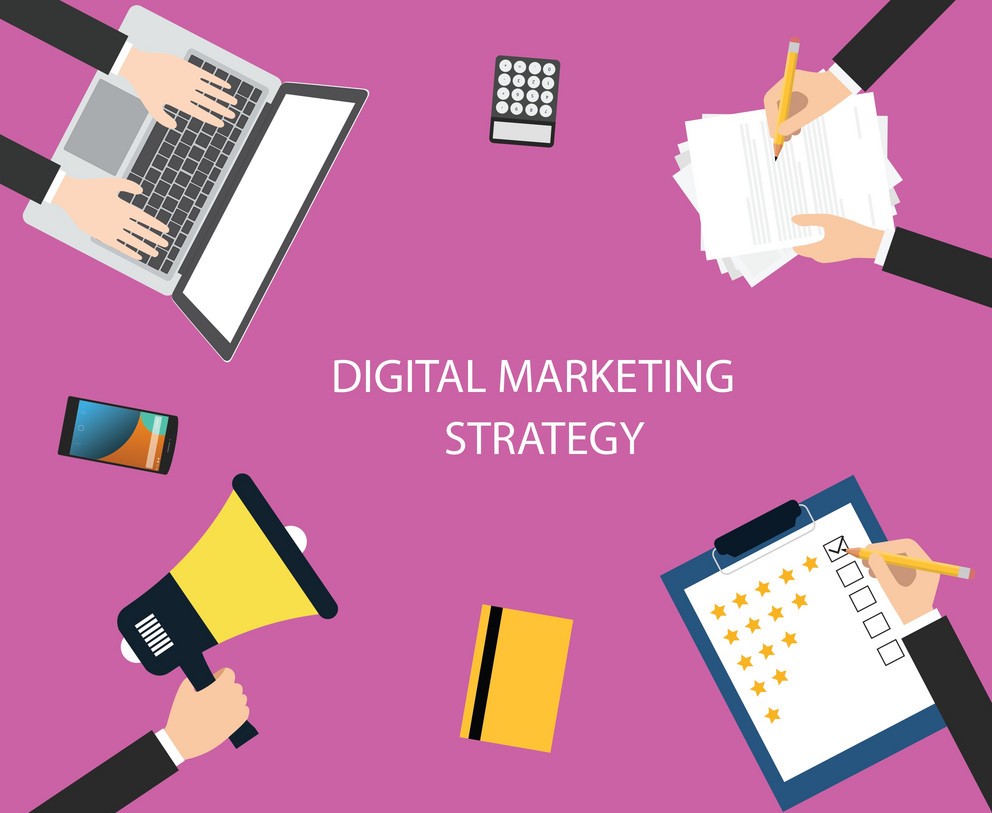Unlock powerful websites and sales funnels built to convert, with zero upfront costs. Let’s bring your vision to life and drive real results together.

Today, most of our web content consumption occurs in the digital world. In this guide, we’ll show you how to build a solid digital marketing strategy so you can create a successful digital presence and market your brand digitally.
Before developing your strategy, you need to ask yourself what you want to achieve with your marketing strategy. This sounds simple, but this step requires you to set apparent and specific goals.
Your goals must lead you to specific actions to achieve them. Illustration by spoon lancer You can use the SMART criteria for this.
Before you begin building yourself, you need to know your digital presence. Illustration by Little digital marketing strategy for First, you need to know your key marketing channels:
Which of these channels brings you the most leads and visitors? Rank each channel and specific medium in order of most remarkable and most negligible effectiveness (so far).
The digital sales funnel represents the entire journey of your customer, from being a complete stranger to becoming a loyal, repeat buyer. For businesses aiming to grow online, understanding this funnel is essential because it highlights the key stages where you can engage, convert, and retain customers. To succeed, you must not only map out the funnel but also align it with the right marketing tools and techniques. One of the most effective ways to do this is to build digital marketing strategy around each stage of the funnel.
At the awareness stage, your goal is to make potential customers notice your brand. This can be achieved through SEO, paid ads, or social media campaigns. Once attention is captured, the consideration stage begins, where you nurture interest by providing valuable content, answering questions, and addressing customer pain points. To stay competitive, brands should build digital marketing strategy that emphasizes personalized engagement during this stage.
The decision stage is where potential customers become buyers. Here, strong calls-to-action, exclusive discounts, or targeted emails can help close the sale. Finally, the retention stage is about turning first-time buyers into loyal customers through post-purchase engagement, follow-ups, and loyalty programs.
When you build digital marketing strategy that integrates the entire funnel, you ensure that every interaction is purposeful and customer-focused. This not only improves conversions but also strengthens long-term relationships, making your business more resilient and profitable in the digital space.

You need to recognize who your target market is before attempting to reach out to them successfully. So how can you recognize who your audience is?
Buyer identities help you recognize your audience before addressing them. Once you can think who a person is, you can make some assumptions about what is undoubtedly requested of them. Illustration by Cross the Lime Put your own in your buyer’s shoes.
Create a narrative:
Get certain.
Customer instance:
Trevor, 26, values experiences over things. He’s “the expressionist” who chooses to buy unique items and doesn’t intend to look like everyone else. He doesn’t own a car.
You then have to locate your clients at different phases of the funnel. In all likelihood, there will be clients at all phases of the funnel who are open to connecting with you.
Knowing where to find your clients is essential to your content strategy. Illustration by -grin- For instance, let’s say your product is an organic deodorant. Your prospective clients may be:
one who does a Google search for organic deodorants and reads an article that features you.
Someone looking to buy a deodorant that is organic and zeroes waste sees your sponsored article post about how your deodorant is built from compostable packaging.
Some who have already bought your deodorant and who you currently include in an email project featuring an option to purchase your deodorant at a reduced price.
Once you have this information, you can target distinct clients through different channels.
At this phase, you should have all the vital information to start planning an Illustration by AEAE. You will develop a specific advertising strategy for every channel that attracts your clients. What sort of web content do you need to achieve your digital marketing goals for each channel?
Your method will be made up of a series of actions that respond to some goals. It will also have a timeline so that the actions can have measurable deadlines.
Some of these actions will be:
Developing a keyword strategy identifying essential keywords to improve SEO.
This will permit to have long-term and easily traceable goals. Your web content calendar will be precise. Each actionable product will include (at least) author, publication date, keywords, topic, and potential tags.
There should be a digital advertising goal for each month. For example, you will feature bi-weekly posts on your blog on a specific theme starting in January.
Posting on social media:
Use the research you’ve conducted to ascertain what web content you should post on which social media platform channels and how often you should do so.
Using CTA’s and widgets:
It is crucial to include CTAs and gets in your digital marketing content to allow customers two easily engage with you and your products.
Marketing automation tools:
Once you have your content strategy down, these tools are a great way to save time and be efficient.
Examine how your strategy is working and course correct. Illustration by spoon lancer Once you have developed a strategy, you should perform this step periodically (put it on your calendar).
These analytics will help you correct and learn from things that didn’t go as planned.
By using analytics software, you can monitor your progress through the various stages of the funnel. You want to understand:
Suppose there is a point where you lose engagement with your customers. What is the reason, and how can you fix it?
What works well and what doesn’t.
Maintain date with the current electronic marketing tools; maybe something new on the market perfectly meets your analytics needs.
With the results collected, you can use data visualization tools to create graphs that will help you with comparisons, goal tracking, and presentations.
Enjoy the post? For More Posts, Visit Appledew